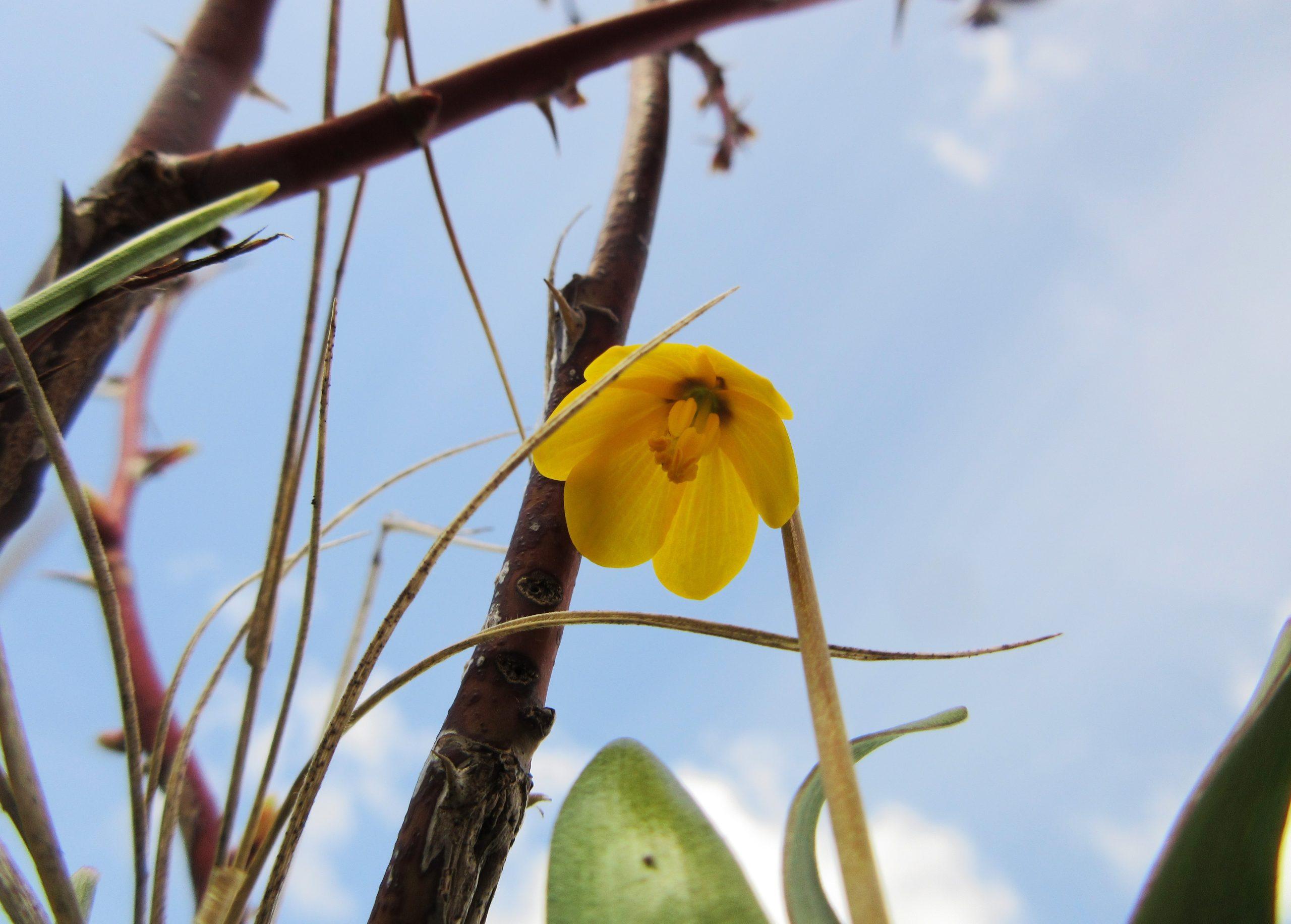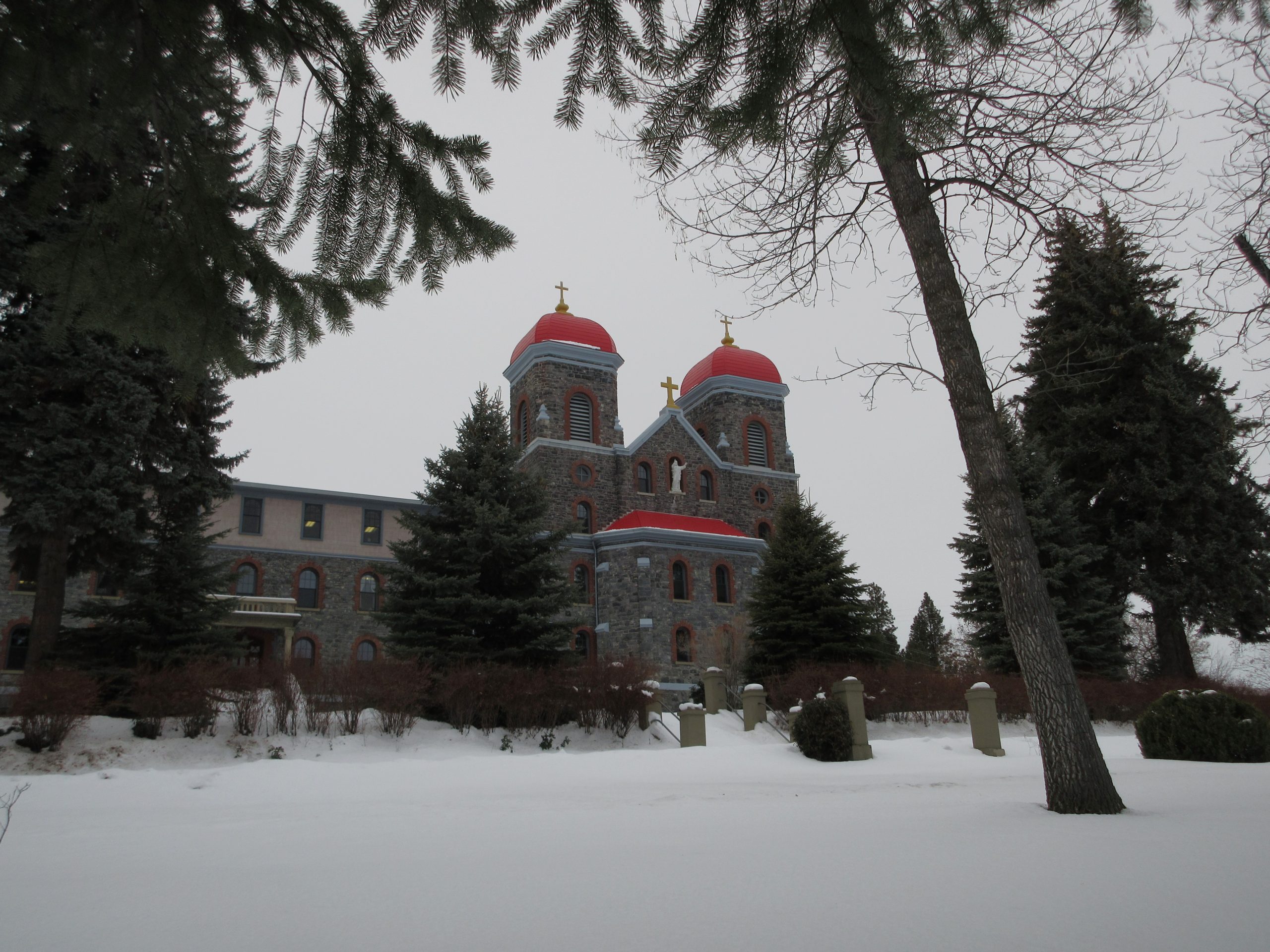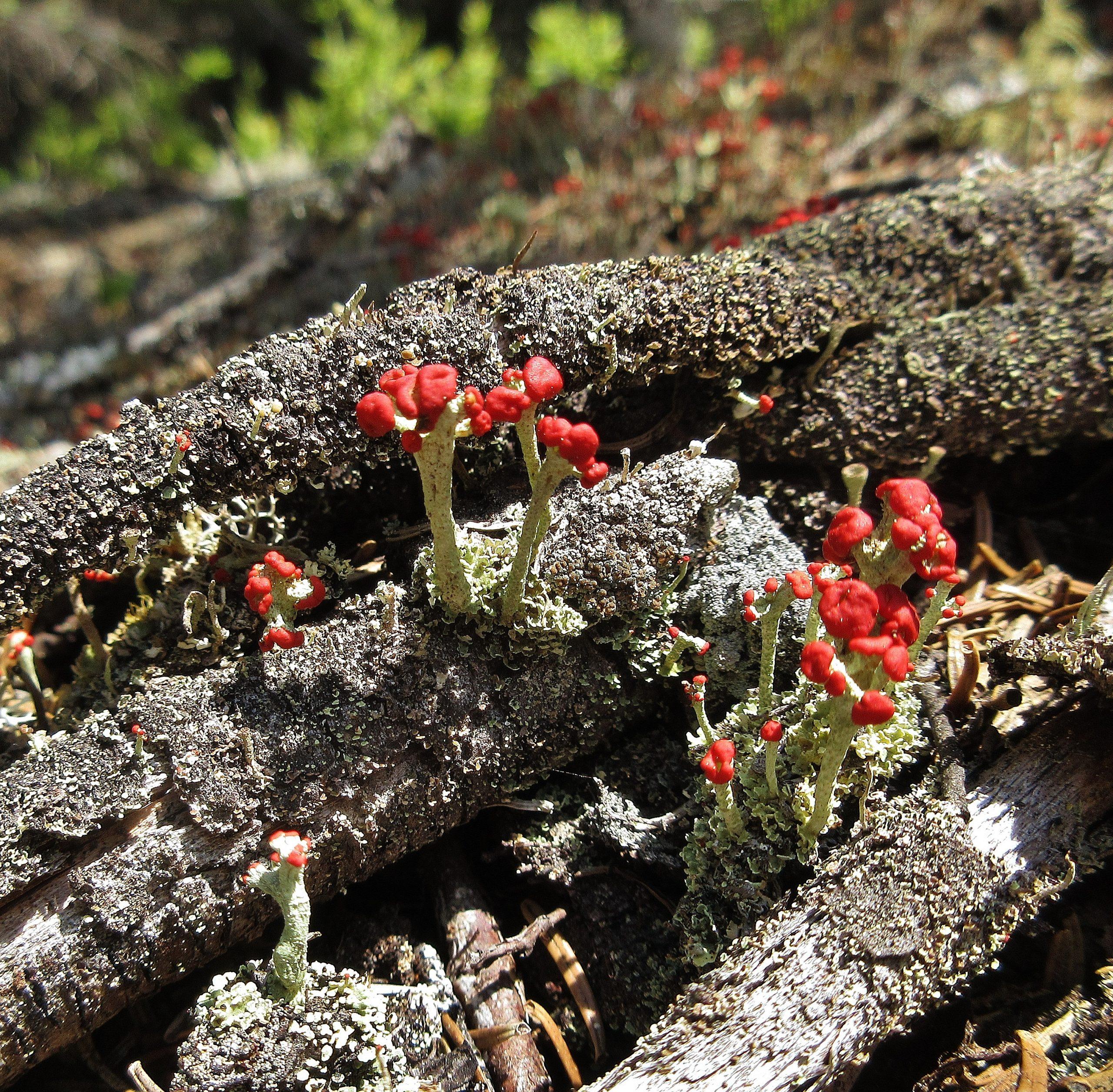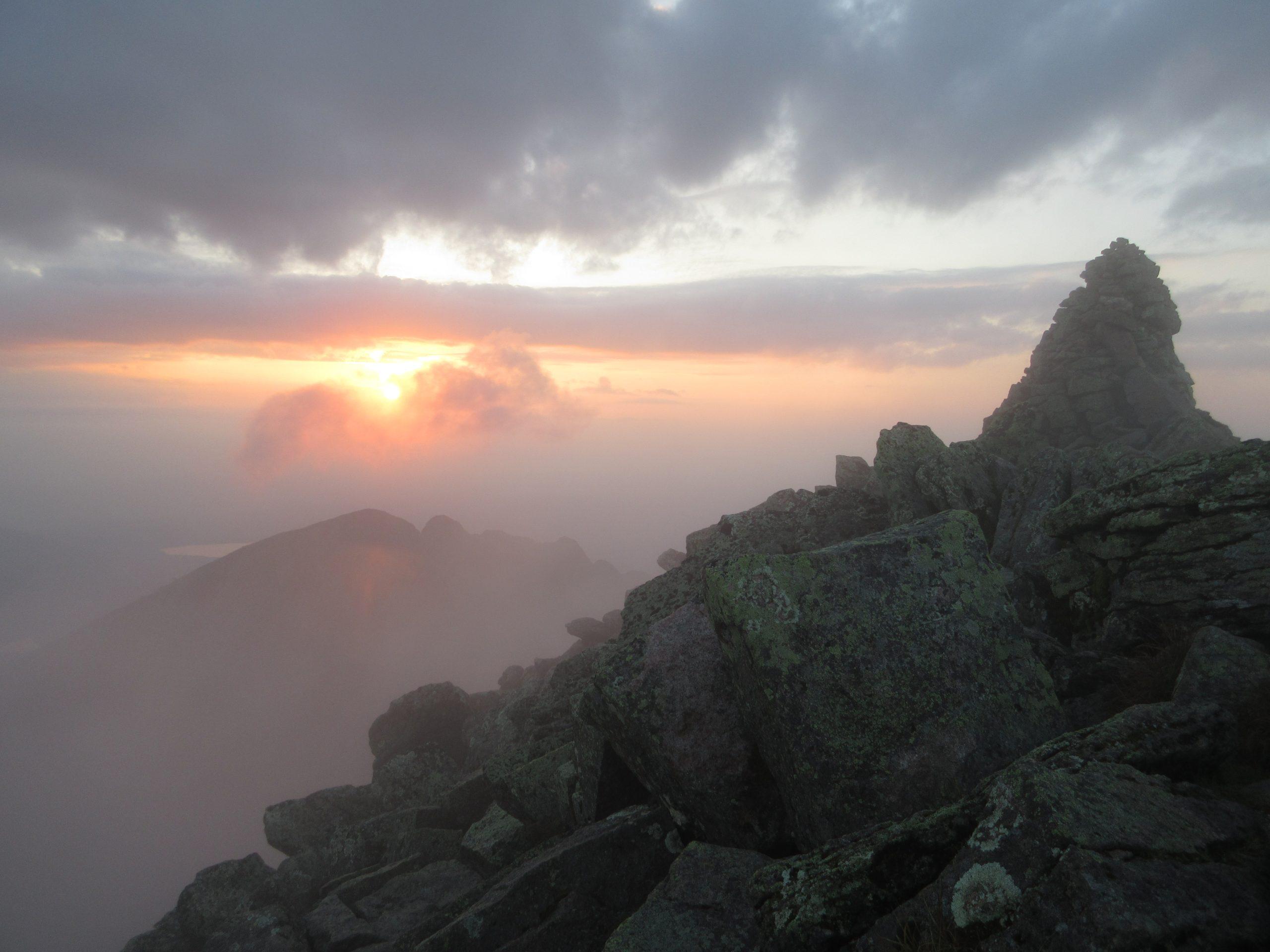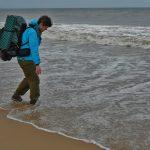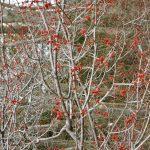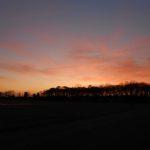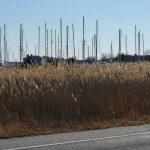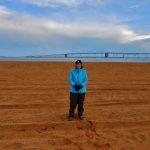This past week, I stayed in Baltimore at the house of my friend Marie Bellantoni while my knees recuperated. She introduced me to Lake Roland Park, a 503 acre tract within the city limits. The park is accessible via public transportation, allowing broad access for Baltimore residents. The lake was created in the mid-nineteenth century when Jones Falls stream was dammed to provide a municipal water supply.
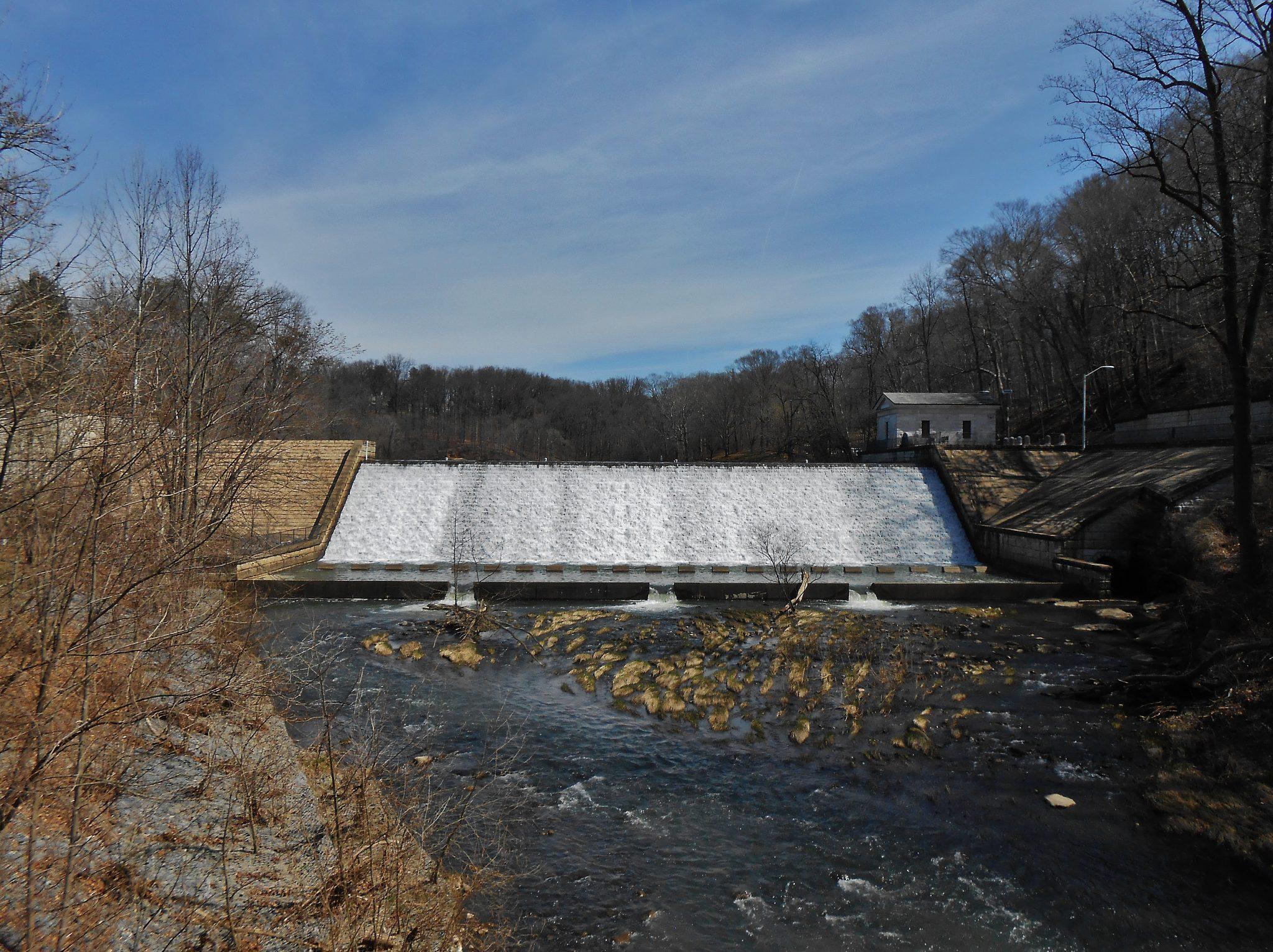
Lake Roland no longer provides water to the city, but it does provide a home to wild creatures including beaver, mink, river otter, and many species of fish. The park’s surprising diversity of habitats make for good birding and botanizing: deciduous forest, pine barrens, marshland, and globally rare serpentine grassland. Volunteers are working to protect the latter habitat – which supports rare plants – against the threat posed by the invasive Virginia Pine.
A Nature Center near the dam houses live turtles, frogs, and snakes, as well as taxidermically preserved birds and mammals. As I strolled past the exhibits, I overheard a father — baby daughter held close against his chest — patiently guiding his young son through an interactive display about animal preparations for winter.
On March 28, I sat at the picnic tables across from the Nature Center, talking with park visitors who passed by. Sara and Harry came for a picnic lunch with their little grandson Grey, who seemed full of enthusiasm for everything he saw. At home, he enjoys the family’s bird feeders and digging in the dirt; the park provides a larger landscape through which to roam. Sara and Harry understand the importance of instilling a love of nature in children. Sara volunteers at the Baltimore zoo, where she participates in a school outreach program that brings live animals to students to nurture their love for wild creatures and the wild places that support them.

When I saw a group of men on the footbridge downstream of the dam dumping netloads of something into the water below, I went over to investigate. The something turned out to be masses of slippery rainbow trout, who dropped in silvery cascades into their new home. Brook trout are Maryland’s native trout species, but human degradation of their habitat has made many of the state’s waters unlivable for them. The stocking of rainbows allows Baltimore’s residents to try their hand at angling. Some might question the value of putting fish into a waterway so people can take them back out again. Yet hunting and foraging food is a fundamental part of the human experience. Many fishermen come to understand the value of conserving healthy aquatic habitat, as the conservation efforts of Trout Unlimited, an anglers’ advocacy group, demonstrate. And fishing is an active, hands-on way to connect children with the natural world.
Back at the picnic tables, Volunteer Master Naturalist Dan Alper stopped to chat with me about his work in the park. He had completed a 60-hour training course through the University of Maryland Extension, and is required to complete 40 hours of volunteer service plus 8 hours of advanced training annually. The mission of the Master Naturalist Program is “To engage citizens as stewards of Maryland’s natural ecosystems and resources through science-based education and volunteer service in their communities.”
Dan grew up in New York City, where he identified as a “nature boy,” though he found little outlet for his interests beyond small-scale gardening. Lake Roland Park would have seemed like a wilderness to him then, he said.
On March 29, I met another of the park’s Master Naturalists, Peter Wiedmann. He grew up in the neighborhood, but became seriously interested in conservation during time out west, where he was troubled by the degradation of forests resulting from pollution and cutting. As he considered ways to inspire action in others, he discovered that the joy people find in birding evokes concern for the forests that are home to the birds they love. He has since become an avid birder, and on Sundays, he sets up his telescope on a heavily traveled path for all to use. He employs his expertise to evoke wonder in park visitors of many nationalities who live in Baltimore’s inner city. “It’s a universal language,” he said. His face lit up as he described the day he spotted a heron through his scope and called on a large, tough-appearing man nearby to put away his cell phone and come take a look. The man was initially reluctant but expressed amazement at what was, for him, a revelation of a previously unseen world.
Dan currently cares full time for his 95-year-old mother. It’s a stressful job with long hours and limited breaks. The park is a lifeline for him. When he gets a few hours off, he wanders its peaceful wooded trails, basking in the “nature therapy” that restores the strength he needs to return to his duties back home.
As Dan and I talked, a phoebe sang from a tree overhead, proclaiming its territory and/or looking for a mate. A red-tailed hawk flew past. A group of teenaged students from a local public school walked by with nets. They were on an expedition to study aquatic creatures: fish, insects, crustaceans. Later, they would teach what they learned to students who visited another park, and learn from those students in turn.
Lake Roland Park is not wilderness. The lake is dammed, the fish are stocked, the flora and fauna have been altered by humans. But it nonetheless offers wild-feeling experience, a space for authentic connection with nature, to thousands of city dwellers who may never have the opportunity to travel into true wilderness. Such places are priceless in our increasingly urbanized world.


